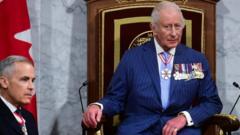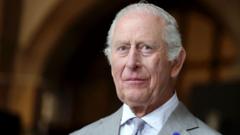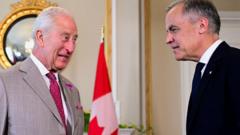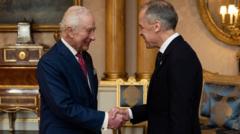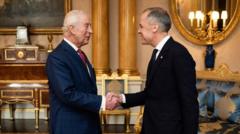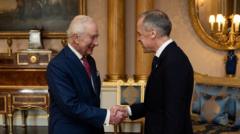**The Royal Train, a luxurious and symbolic mode of travel for Britain's monarchy since Queen Victoria, will no longer be in service as part of a financial restructuring.**
**The End of an Era: The Royal Train’s Retirement**

**The End of an Era: The Royal Train’s Retirement**
**Cost-Cutting Measures Lead to Discontinuation of Iconic Royal Transport**
The prestigious royal train, which has been an emblem of British opulence since its inception, is set to retire as Buckingham Palace announces its discontinuation due to cost-cutting measures. This decision marks the end of an era that began with Queen Victoria, who was both reluctant and ultimately impressed by train travel's comfort.
Having been used for royal journeys for over 150 years, the train has transported monarchs to various engagements, palaces, and even celebratory occasions like honeymoons, proudly displaying its luxurious fittings and services. Queen Victoria, persuaded by her husband Prince Albert, became the first monarch to travel by this mode of transport in June 1842, overcoming her initial fears about train travel's effects on health.
In 1869, Victoria commissioned exclusive rail cars adorned with lavish decorations, including blue silk and 23-karat gold. Despite her lavish approach, she famously chose not to dine on board, believing it would negatively impact her digestion. The legacy of the royal train includes not just the luxury of travel but also a connection to the historical tapestry of the British monarchy, now facing a significant change.
While the retirement of the royal train may alleviate some financial strain on the monarchy, it simultaneously represents a farewell to a long-standing tradition that intertwined the lives of the modern royal family with their historical predecessors.
Having been used for royal journeys for over 150 years, the train has transported monarchs to various engagements, palaces, and even celebratory occasions like honeymoons, proudly displaying its luxurious fittings and services. Queen Victoria, persuaded by her husband Prince Albert, became the first monarch to travel by this mode of transport in June 1842, overcoming her initial fears about train travel's effects on health.
In 1869, Victoria commissioned exclusive rail cars adorned with lavish decorations, including blue silk and 23-karat gold. Despite her lavish approach, she famously chose not to dine on board, believing it would negatively impact her digestion. The legacy of the royal train includes not just the luxury of travel but also a connection to the historical tapestry of the British monarchy, now facing a significant change.
While the retirement of the royal train may alleviate some financial strain on the monarchy, it simultaneously represents a farewell to a long-standing tradition that intertwined the lives of the modern royal family with their historical predecessors.








